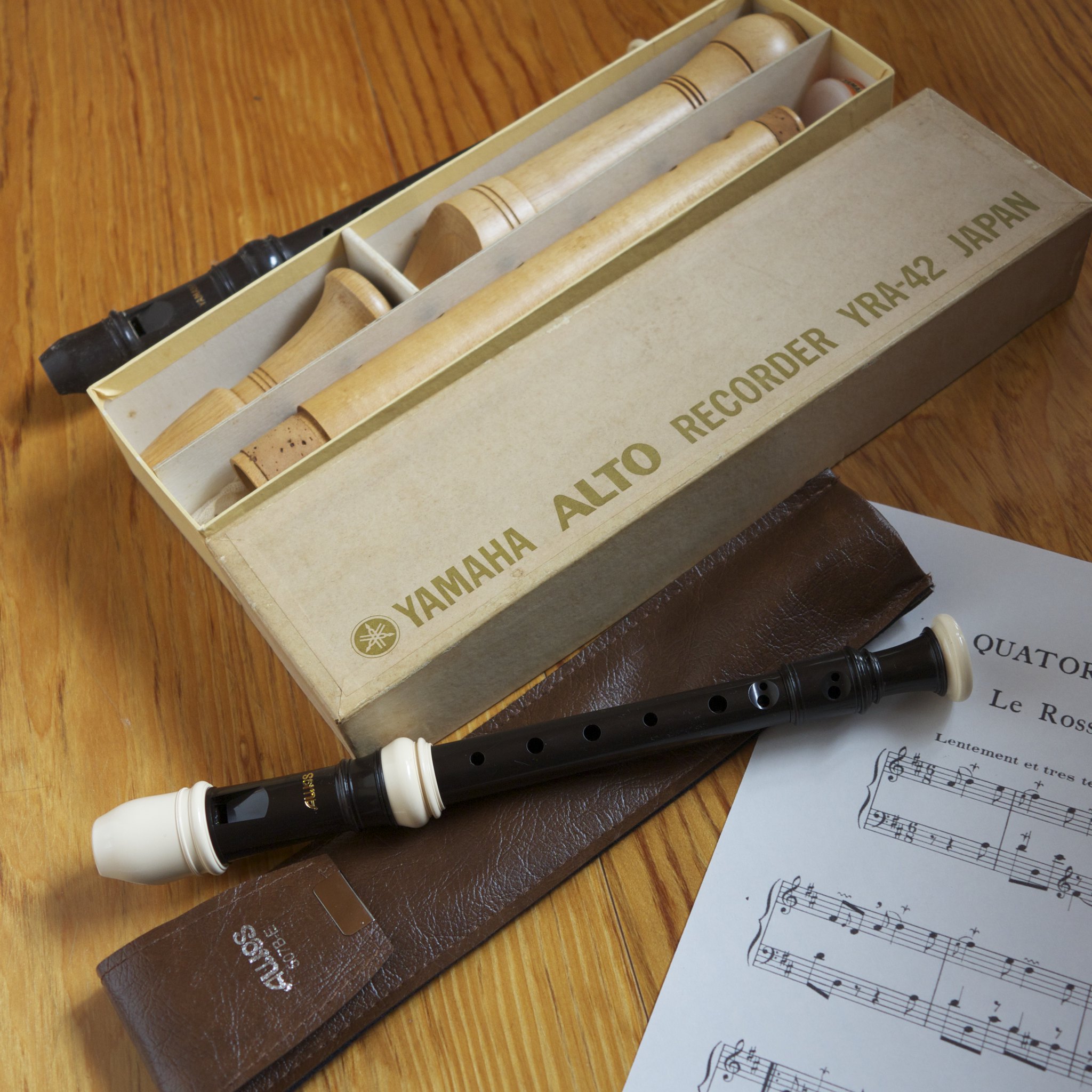How does one begin to navigate the flute repertoire, a vast array of music from antiquity to modern day? I will give you a very high level overview of the repertoire for the flute, and also showcase some resources you can use to discover repertoire on your own.
We will be focusing purely on music for flute, flute and piano, and highlighting major concertos in the repertoire as well. No additional chamber music will be discussed, though you can check out our overview of some flute and violin duets for some inspiration.
Music You Should Know from the...
Baroque Period
In the age of the Bachs, there are many, many, flute pieces to examine. I would suggest looking at the following composers:
- Johann Sebastian Bach
- Carl Philipp Emanuel Bach
- Johann Joachim Quants
- Georg Philipp Telemann
Now, by no means is this list exhaustive, but if you are new to the flute repertoire, but have some knowledge of music and music history, some, if not all, of these composers will be familiar to you, and for good reason. They were prolific, and considered to be some of the best composers of the time.
There are some works from this period which are considered standards and are part of any aspiring flute players study.
Flute Alone
- J.S. Bach's Partita in A Minor, BWV 1013. This is a piece for solo flute and Bach's only know piece for the instrument without continuo.
- C.P.E. Bach's Sonata in A Minor
Flute and Keyboard
- J.S. Bach's Sonatas for Flute. There are seven sonatas, four which are assumed to be written by Bach, and three which have been attributed to Bach, but scholars are fairly certain were actually written by his son, C.P.E. Bach. My favorite sonata is the Sonata in B Minor, if you are looking for a place to start.
- Telemann Suite in A Minor
Classical Period
The era that is synonymous with Mozart, early Beethoven, and late Haydn had very little to offer in the area of solo flute literature. The instrument had largely fallen out of favor as a solo piece and was more found as a key member of the orchestra of the period.
However, there are three pieces that are standard in the flute repertoire of this time:
- Mozart's Concerto in G, K. 313
- Mozart's Concerto in D, K. 314
- Gluck's Minuet and Dance of the Blessed Spirits
The two Mozart concertos are the most standard concertos in the literature, and are studied by all flutists. Gluck's piece is an excerpt from his opera Orfeo ed Euridice, but is found inside Robert Cavally's 24 Short Concert Pieces.
Much lesser known are the assortment of music for flute and piano. You can look for music by Louis Emmanuel Jadin, Johann Georg Graeff, Johann Nepomuk Hummel, and Friedrich Kuhlau, though some of these pieces knock on the door of the next era, where the flute really starts to shine.
"Romantic" or Nineteenth Century
As the language of music expanded after Beethoven, so to did the repertoire for the flute. Some great pieces from this era:
- Franz Doppler's Fantasie Pastorale Hongroise
- Carl Reinecke's Sonata "Undine"
- Franz Schubert Introduction and Variations
- Charles-Marie Widor Suite
- Various works by Theobald Boehm
Marcel Moyse, a prominent flutist in the early twentieth-century is well known for collecting some of the prominent works of his time. Many of the works from this era are found in his Golden Age Collection.
The French Conservatory
Due to the efforts of flutist and composer Paul Taffanel, a new piece of flute music was commissioned each year as part of a flute contest held by the Paris Conservatory. These works span 1860 to the early 1900s, and are a class all of their own.
Many flutists learn several of the pieces pieces through Marcel Moyse's collection Flute Music by French Composers. Some of my favorites from this era:
- Enesco's Contabile et Presto
- Faure's Fantasie
- Chaminade's Concertino
"Modern" or Twentieth Century
Solo flute composition has soared in the past 100 years. Repertoire continues to expand daily, and is expanding in all areas, utilizing modern techniques, extending the range, focusing on other members of the flute family, and so forth. I can only highlight some of the more significant and/or well known works from this era, but if anything here excited you, pull on that string and continue to explore more.
Solo Flute
I did some extensive coverage on extended flute techniques, which are used frequently in solo flute music of this era. Music by Robert Dick, especially Lookout and Afterlight are standards in the modern flute repertoire.
For solo flute, Claude Debussy's Syrinx is a highly narrative piece, full of emotion that is rarely found in a piece for solo instrument.
Another standard in the solo flute repertoire is Edgard Varese Density 21.5, named so for the density of platinum, as the piece was written for the premiere of Georges Barrere's platinum flute.
The composer Toru Takemitsu has composed many wonderful solo pieces for flute, including Air, Itinerant, and Voice. These are wonderful, eastern sounding works that gain inspiration from eastern flutes. Extended techniques are used throughout. In a similar vein, Fukushima's Mei is another piece worth examining.
To get away from extended techniques and move into a different type of tonality, check out Vincent Persichetti's Parable for solo flute and Jacques Ibert Piece.
Want something lively? Astor Piazzolla, the master of the Tango, wrote 6 Tango Etudes for solo flute which are a ton of fun to play and listen to.
Also, if you checked out our article on flute beatboxing, you may be familiar with the name Greg Pattillo. His piece Three Beats for Beatbox Flute has made it onto a couple of repertoire lists and could be an interesting exploration into this style.
Flute and Piano
If you add piano into the mix, there are an impossible number of pieces to explore. And honestly, I am not even sure where to begin, but lets talk about a few of the highlights in the flute and piano repertoire for this era and hopefully we can find a path that makes sense.
The American composer Aaron Copland has a wonderful piece called Duo that has a classic Copland sound, and really treats the two instruments as equals, instead of the typical accompaniment treatment the piano usually holds in this combination. If you enjoy the American idiom, then Lukas Foss's Three American Pieces will be sure to delight.
Want some great European repertoire, then I have always been a fan of Frank Martin's Ballade. A piece for flute and piano that has a symphonic flair with a wide range, in both pitch, dynamics, and emotion.
Paul Hindemith, a widely successful composer in the early part of the century, and has works for a wide variety of instruments. His Sonate for flute and piano is musically challenging but worth every note.
I have fond memories of performing works in Wind Ensemble by Joseph Schwantner, and luckily for me, he has three works for flute and piano, Black Anemones, Looking Back, and Soaring.
Other great modern works to explore:
- Carl Nielsen's Concerto
- Francis Poulenc Sonata
- Otar Taktakishvili Sonata for Flute and Piano
- Samuel Barber's Canzone
Interestingly enough, extended techniques are not as popular in work for flute and piano as they are for flute solo. That doesn't mean the pieces do not exist, but they are less prominent. An exception to this is Ian Clarke's Spiral Lament, written about giant African snails, which had multiple uses of quarter-tone grace notes.
And, if you want a bit of classical/jazz crossover, I HIGHLY recommend Claude Bolling's Suite for Flute and Jazz Piano.
The Piccolo
I did not want to end this repertoire overview without a nod to the growing array of piccolo repertoire. While not as vast, there are standards for the instrument that must be mentioned:
- Vivaldi: Various concertos for piccolo
- Liebermann: Concerto for Piccolo, Op. 50
- Persichetti: Parable for Solo Piccolo
- Wilder: Sonata No. 1 for piccolo/flute/alto flute and piano
Further Information
The National Flute Association maintains a Pedagogy Committee, which periodically releases repertoire lists, and actually gives grades assessing the difficulty of piece. You can also locate various collegiate flute programs, each one often maintaining their own list of suggested or required repertoire.
The popularity of the flute has allowed various flute organizations to form and the local and state level, often times sponsoring competitions, which often have a graded repertoire list to examine.
Hopefully the information in this article helps get you started on the path to exploring the repertoire of the flute. It is a really fun rabbit hole to fall down into, I promise you that!




